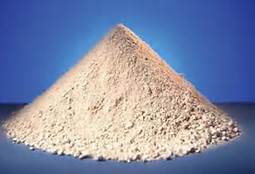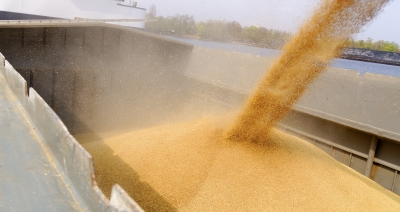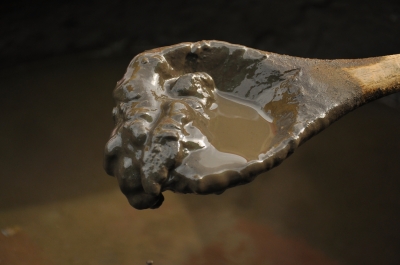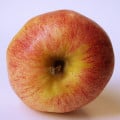Dirt: Delightfully Delicious & Nutritious
Dirt Eating All Over the World
According to research presented in the June 2011 issue of The Quarterly Review of Biology, eating dirt is a documented phenomenon that occurs all over the world in every country and every continent. Its history dates back to 2,000 years when Hippocrates recorded an account of a human eating the earth. Even animals have been documented eating dirt. It is no longer considered a dirty little practice that young kids will eventually grow out of, or a habit that third-world country citizens embark upon because of low-food supply. People all around the world enjoy eating dirt!
The study of geophagy still leaves many unanswered questions to curious minds. Imagining a child taking a big bite out of a freshly patted mud-pie is nothing out of the norm. But why would a mentally stable adult crave to eat dirt? Scientists have posed a few theories to explain this phenomenon:
"Humans tend to eat clay when there are great demands on their nutritional status, such as pregnant or lactating women, or children going through growth spurts."

Three Most Popular Dirt-Crave Theories
- Pica (mental illness)
- Mineral Deficiencies (such as zinc, calcium, iron)
- Protective "muddy" barrier for the stomach
What Do You Think?
Which of the three do you think is the top reason why someone might crave dirt?
A Quick and Dirty Quiz
Above are the three top hypotheses that scientists and medical experts attribute to the "taboo" behavior of eating dirt. As more mega-analysis surveys are being conducted on geophagy and as more people are willing to come forward and admit to dirt eating, one of the above listed reasons is rising much higher than the others. Before reading any further, can you guess which one it is?

Summary of Pica
- compulsive eating disorder
- desire to eat non-nutritious items
- most common items: chalk, starch, clay, paint
- clay might not be considered pica after all
The "Pica" Theory
You may be familiar with the hit TV Show My Strange Addiction, which showcased a host of strange addictive behaviors and strange addictive eating habits, such as the woman who ate a couple of sofa cushions, the girl addicted to smelling/drinking gasoline, or the woman addicted to eating clay masks (see video at the bottom of this hub).
What is pica? Pica is an all-encompassing term for human behaviors that involve the persistent compulsive desire to eat nonfood substances that lack nutrition. Some of the most common types of pica are eating:
- chalk
- starch
- clay
- paint
- stones
- cigarette ashes
Pica is a Latin term that describes the magpie bird, a bird characteristically known to eat just about anything. Here's why the pica theory does not work for someone who craves eating dirt. The key component for it to be considered pica is that what's being eaten has no nutritious value whatsoever and that the eater feels compelled to continually eat the substance. The American Dietetic Association (ADA) categorizes pica as a psychobehavioral disorder, suggesting treatment for a pica patient to be combined efforts of a nutritionist and psychologist/psychiatrist.
However, according to research in numerous studies, including the Consumer Research Magazine, those who eat clay might very well be getting some nutritious benefits from this unconventional appetizer. Proof that clay has nutritious benefits after all discredits the pica theory.
Giving You "The Dirty" on Dirt-Dining
Who Eats Dirt
| Benefits
| Risks
| Ways to Avoid Risks
|
|---|---|---|---|
People across the world in every country & culture
| High Mineral Concentrations (Iron, Magnesium, Zinc, Calcium, etc.)
| too much mineral consumption can actually create a deficiency
| avoid eating dirt at all
|
Young Children
| Boosts the immune system
| consumption of worms
| only eat dirt from mined areas that retrieve clay from deep within the earth
|
Pregnant Women
| Detoxifies the body
| harmful bacteria (feces)
| don't eat clay dirt from heavily trafficked areas
|
Animals
| Form protective lining in the gut
| constipation
| consume moderate amounts
|
Aids with digestion & absorption of nutrients
| bowel obstruction
| purchase pure clay from verified merchants
| |
Can protect gut from parasites
| contaminated soil can lead to lead/arsenic poisoning
|

"Some pregnant African women frequently eat clays that provide as high as 80% of the Daily Recommended Allowance of calcium for pregnant women."
Mineral Deficiency Key Points
- holds some merit
- used in 1821 to treat chlorosis
- correlation between pregnant women, low iron, & dirt-eating
- iron supplements do not necessarily take away the craving
Mineral Deficiency Theory
In the above poll, if you chose "mineral deficiency" as the main cause for someone to crave dirt, there is some merit to your choice. According to the Consumer Research Magazine, dirt was consumed as early as 1821 to correct a deficiency disease that was often found in adolescent girls: chlorosis. This deficiency disease gave their skin a greenish hue and is the same disease that affects plants growing in soil that lacks a sufficient iron, zinc, and other mineral content level. Pregnant women all over the world, especially in African countries such as Ghana, have some of the highest recorded records of consuming clay dirt. Many pregnant women suffer from a lack of iron, which would seemingly support the theory that mineral deficiencies lead to the consumption of clay. However, some pregnant women who received iron supplements reported that the craving disappeared while other women reported no decreased desire to consume clay. Therefore, while the mineral deficiency theory holds some merit, it isn't the best suitable theory as to why humans crave dirt.

"According to the EPA (Environmental Protection Agency), the U.S. estimates that children consume 200 to 800 milligrams of dirt daily, either by intentionally eating dirt or placing dirty hands in their mouths. Scientists point out that this actually promotes a healthy, strong-functioning immune system in the child."

Dining on Dirt Helps the Tummy!
If you chose the protective stomach barrier theory, then your answer matched the hypothesis that the majority of scientists and researchers agree upon. Dining on dirt would be considered an abnormal and absolutely bizarre behavior if it wasn't a behavior so commonly found in the animal kingdom. Gorillas dig up soil and consume it; not only do elephants toss dirt on their backs, but they eat it too. Livestock isn't just grazing on grass; they graze on rich soil as well. Kangaroos eat dirt to keep lesions from forming in their mouths. Clay is not an easily digested substance. Because of this, it forms a mud-coating in the stomach that offers a wide range of benefits:
- slows down digestive system which gives intestines more time to absorb minerals and nutrients
- detoxifies the body because the positively charged ions in dirt bind to the toxins so that they can harmlessly pass through the gastrointestinal tract
- helminth (worm) infections from eating clay actually prevents inflammatory bowel disease (IBM)
- soothes upset stomach from nausea (morning sickness)
- soils rich in aluminum compounds act as immunologic adjuvants that promote the creation of antibodies to protect from pathogens
At first, I thought, "Eww, I've got dirt in my mouth." That soon became, "Mmm, I got dirt in my mouth."
Meet Woman Addicted to Eating Clay Mask
How I Stopped Eating Dirt
Yes, I was addicted. I hid the behavior because I was ashamed and thought that if anyone found out, they would consider me a freak. But I craved clay dirt and couldn't seem to stop myself. One day, I placed a scoopful on my tongue and it tasted like, well...dirt. I spat it out, repulsed by the flavor and went years without ever touching it again, until I became pregnant with my second child. The childhood craving for dirt returned but left soon after the birth of my son.
My Personal Experience with Geophagy
Certainly this article has shown you all the health benefits of eating dirt, but it hasn't quite lived up to its title of dirt being "delightfully delicious." How could you know how dirt tastes unless you've eaten some? Well, my journey through geophagy began when I was about ten years old. I lived down a dirt road and when people would drive off, their tires would create plumes of dust clouds and the dirt would get in your nose and mouth. At first, I thought, "Eww, I've got dirt in my mouth." That soon became, "Mmm, I got dirt in my mouth."
Not long after that, I was scooping the reddish clay dirt into a zip-loc bag, hiding it in my dresser drawer, and eating it by the spoonful. In many geophagy forums, I have found dirt-eaters refer to the taste as an earthy flavor with a soft texture that melts in your mouth. I agree wholeheartedly. But similar to black coffee and beer, dirt is definitely an acquired taste.
To Sum It All Up
As I researched geophagy, I found great comfort in knowing that I was not alone when it came to dirt-eating. I wasn't abnormal, and I wasn't a freak. Furthermore, the benefits of eating dirt are even more of a plus. But be careful because there are risks involved for those who like to dibble in dirt.
© 2013 Jessica B Smith





